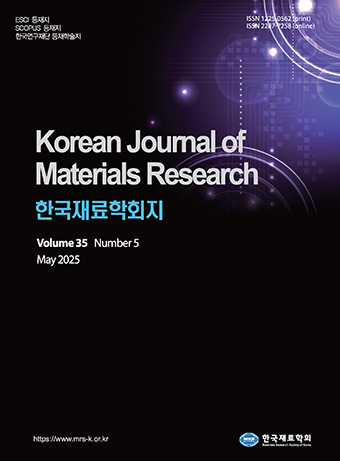Instructions for Authors
Author's Checklist
Copyright Transfer Form
Korean Journal of Materials Research is the official publication of the Materials Research Society of Korea - a member of IUMRS (International Union of Materials Research Society). The journal contains research on nano-materials, electronic and sensor materials, energy and ecomaterials, biomaterials, display and optic materials, composite and structural materials, and metals. All manuscripts submitted are considered for publication under the condition of originality: a manuscript must not have not been published in any other journal.
1. Publication types
There are three types of publications in Korean Journal Materials Research: research articles, short communications, and reviews.
2. Qualification as authors
The first author and corresponding author should be members of the Materials Research Society of Korea. If they are not members, they should apply for membership before submission. However, exceptions can be made if permitted by the editorial board. Please contact the society office to become a member.
Materials Research Society of Korea
204, 202, Muhak-ro, Dongdaemun-gu, Seoul 02574, Republic of Korea
Tel: +82-2-566-4496, Fax: +82-2-566-4497
E-mail: mrsk@mrs-k.or.kr, Homepage: http://www.mrs-k.or.kr
3. Research and publication ethics
3-1 Duplications: A manuscript will not be considered for publication if the author submits the same contents of research results or figures that have already been published in other scientific journals or periodicals.
3-2 Authorship: All of the following conditions should be met to qualify for authorship:
3-2-1 One who contributes substantially the concept and design of research, acquisition of data, analysis and interpretation of data
3-2-2 One who drafts the article or revises it critically
3-2-3 One who guides the research and corresponds with the editor
The Editor-in-Chief and Editorial Board will consider ethical problems first when research ethics are raised as an issue in the journal.
For other ethical issues that are not stated in this information, international standards for editors and authors (http://publicationethics.org/international-standards-editors-and-authors) will be adopted.
4. Submission of manuscript
The manuscript must be submitted electronically to the MRS-K homepage (http://www.mrs-k.or.kr) with the copyright transfer agreement and the authors' check list. The copyright transfer agreement will be signed by all listed authors.
5. Guidelines for manuscript
The paper should be prepared according to the following rules.
5-1 Primary language should be chosen between Korean and English and the writing should be done horizontally.
5-2 Word processing software should be used with A4 paper size (297*210 mm) and a 2.5 cm paper margin should be secured on all sides.
5-3 The recommended length is around 8 pages.
5-4 The paper should be composed in the following order.
5-4-1 Korean title of the paper
5-4-2 Korean name of the author and the organization (Mark "†" for the correspondent with his/her e-mail address at the bottom)
5-4-3 English title of the paper
In the English title, the first letters of all words including words next to hyphens should be capitalized except for prepositions, articles, and conjunctions.
5-4-4 English name of the author and the organization (Mark "†" for the correspondent)
5-4-5 English abstract (200~250 words)
5-4-6 Keywords: Five or fewer and write them in lower case.
5-4-7 Main text (introduction, theory, experimental procedure, results, discussion, conclusion, acknowledgement)
5-4-8 References (write in English)
5-4-9 List of English description for tables, figures, and pictures.
5-4-10 Tables
5-4-11 Figures
5-4-12 Images
5-5 It is recommended that the main text avoid redundancy and it should be clear and simple. The results and the discussion should be separated.
5-6 Up to 5 keywords can be used for the paper, and they should refer to attached data in the contribution rules of January's issue each year.
5-7 The size of the figures, thickness of lines, and size of fonts should be reduced when they are printed in half the section (app. 6.5 cm) or a full section (app. 13 cm). Description of a figure should be displayed in English as shown in the example below. (Display of main text should also be done in figures).
5-7-1 (Example) Fig. 1. The effect of reaction temperature on the shape of particles.
5-8 Images (scale bar should be displayed) that include fine structure should be clear and sharp and the font size should be reduced.
5-9 Description of a table should be made above the table as shown in the following example where the main text is also displayed in the table.
5-9-1 (Example) Table 1. Composition of alloys (at %)
5-10 When the language is Korean, all the English words in the text should be written in lower case. However, for the indication of proper nouns and pictures, the first letter should be capitalized.
5-11 Widely known technical terms should be written in Korean as much as possible, while new foreign technical terms should remain in the original language.
5-11-1 (Example) emitter 에서 > 에미터에서
5-12 For numbers, Arabic figures and SI units should be used. The number should be displayed inside parentheses if other units are used.
5-13 When quoting a document in the main text, the quote number should be expressed on the right shoulder of the paragraph, such as 1), 2), 3)... or 1-5). In the reference section of the text, details are provided in the following order: names of all authors, the volume and the year in the case of a journal, whereas a separate volume is expressed by: names of all authors, name of the book, publication number (more than two volumes), pages, name of the editor, name of the publishing company, location, and (date of issue). Abbreviations follow the expression method of a chemical abstract. All references are made in English and if the main text is not written in English, the language should be marked in parentheses (i.e. in Korean, in Japanese).
2) H. K. Kim and G. D. Hong, Korean J. Mater. Res., 26, 123 (1989).
3) H. Lamb, Hydrodynamics, 6th ed., p.573, Cambridge, U.P., Cambridge, England (1989).
4) K. I. Kim, J. L. Lee and Y. K. Park, in Proceedings of the Materials Research Society Symposium (Palo Alto, CA, April 1987). ed. K. H. Liu (Materials Research Society, Pittsburgh, USA, 1987) p.32
5) C. H. Kim, Ph. D. Thesis (in Korean), p. 80-85, Hankook University, Seoul (2008).
6) The following rules apply when quoting from a web page:
(Reference: P. Brennecke, Academic Integrity at MIT, USA)
The New York Time On the Web. Retrieved July 6, 2005 from http://www.nytimes.com
5-13-2 When the author is unclear:
5-13-3 In case of on-line dictionary:
5-13-4 In case of a database:
6. Peer reviews
Every submitted manuscript is circulated to three peer reviewers who are eminent scholars in the research field. The review process will be continued three times if a revision request is suggested by the reviewers. If the reviewing should exceed three times, the manuscript will not be considered for publication. If two reviewers do not recommend accepting the publication, it will not be considered for publication. If one reviewer does not agree and the other two reviewers recommend accepting for publication, then the editor-in-chief will decide on acceptance of publication.
The finally accepted manuscript will be reviewed by the manuscript editor for consistency of the official format of Korean Journal of Materials Research. The manuscript may be revised according to the comments of the manuscript editor.
7. Publication charge and reprints
When the publication of the manuscript is issued, the authors will be charged for the reviewing process and publication. The amount of publication charge is 210,000 Korean won/publication (6 pages). A fee of 35,000 Korean won will be charged for each additional page of publication, and 100,000 Korean won will be charged with any statement of acknowledgement.
8. Copyright
The published papers including the electronic versions are owned exclusively by the Materials Research Society of Korea. For reproduction of the papers permission of the Materials Research Society of Korea should be sought.


 Korean Journal of Materials Research
Korean Journal of Materials Research








